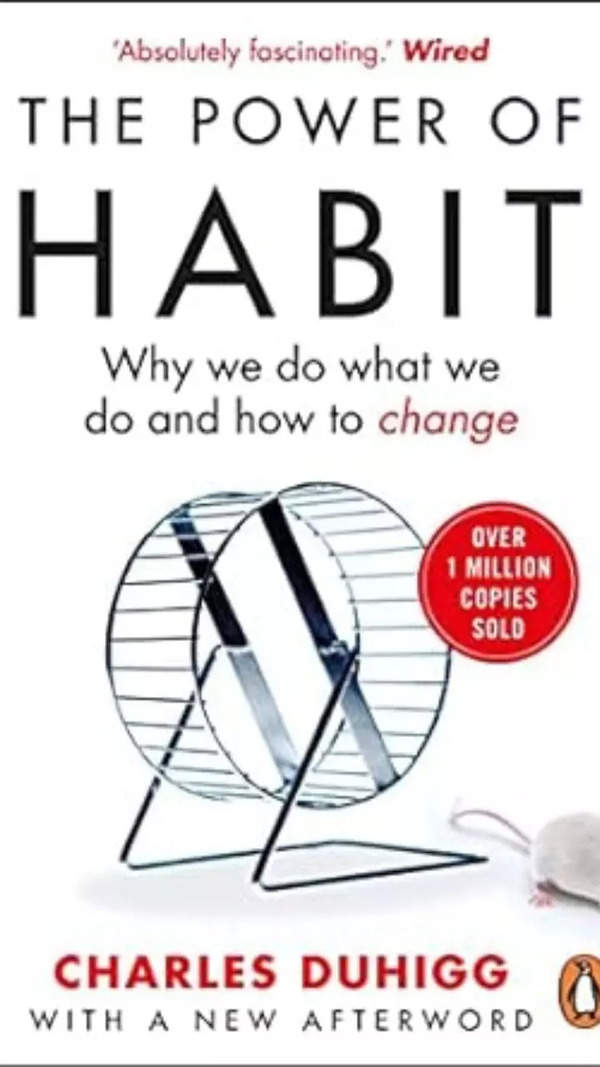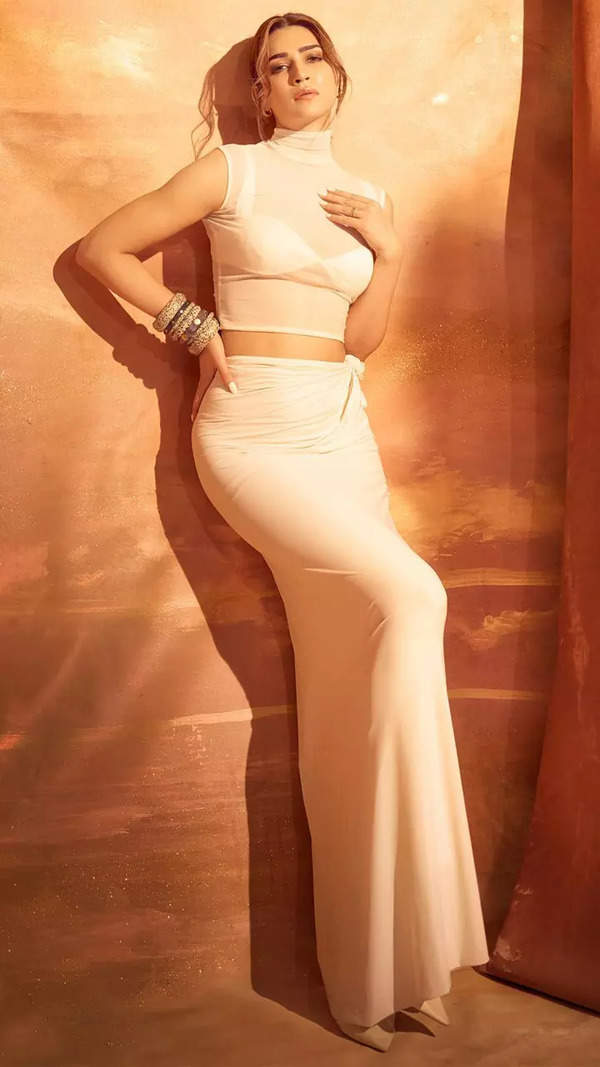- News
- entertainment
- hindi
- bollywood
- Randeep Hooda: Naseeruddin Shah is the symbol of alternate cinema
Trending
This story is from November 5, 2014
Randeep Hooda: Naseeruddin Shah is the symbol of alternate cinema
Randeep Hooda portrays India’s richest and most visionary artist Raja Ravi Varma in Ketan Mehta’s 'Rang Rasiya'
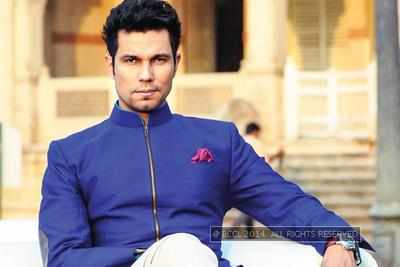
Randeep Hooda portrays India’s richest and most visionary artist Raja Ravi Varma in Ketan Mehta’s 'Rang Rasiya'. He talks to Bombay Times about how playing Raja Ravi Varma changed his life.
“My career changed after playing Raja Ravi Varma. Before that, my idol Naseeruddin Shah and my sense of cinema was very niche. But playing Raja Ravi Varma, I realised that the deepest rooted desire for any artiste in reality is to reach out to as many people as possible.You are bastardising your art and being dishonest to yourself if you say that I want to cater to only this many people. In reality, your deepest desire is that you are hoping against hope and sometimes, against circumstances to reach out to as many people as you can, and that is what turned my life around. It took me three years of hibernation after doing 'Rang Rasiya', but after that, I did 'Once Upon A Time in Mumbaai', 'Jannat 2', 'Jism 2' and 'Kick' as all these films have a larger audience. Naseeruddin Shah is the symbol of alternate cinema and is still my idol in terms of how I approach my cinema, but not in terms of kind of work.”

(Randeep Hooda at the Baroda Palace)
Raja Ravi Varma is a National Icon. The illustrious ancestor Maharaja Sayajirao Gaekwad III of the Baroda Royal family was the most important patron of the famed painter and it was he who funded the entire journeys of Ravi Varma as he travelled the length and breadth of the country to understand the soul of India.

(Nandana Sen)
Sayajirao Gaekwad III had, in fact, built a special studio for the artist in the palace grounds and allowed his first ever public exhibition for the common man as per Ravi Varma’s desire. It was during his stay at the Laxmi Vilas Palace in Baroda that Ravi Varma painted some of his most well known work including that of depicting episodes from the Ramayana and the Mahabharata. It was a proud moment for Rajmata Shubhanginiraje Gaekwad as she played host to the grand premiere of the film along with the cast at Baroda. Alongside her were her son Maharaja Samarjitsinh Gaekwad and his wife Radhikaraje Gaekwad.

(How his paintings have been preserved: They need to breathe normally, so are kept in the normal climate and are not exposed to normal lighting. The palace has a museum where people can go and see these paintings)
Members of the royal family spoke exclusively to us post the screening:
Rajmata Shubhangini Raje: I felt emotional as I remember six years back when Ketan had come to meet my husband about the film. Today, while seeing the film, I thought of my husband a lot. He was an artist and I wondered what his take would have been and I am sure he would have had his own sensitive outlook on it. It’s a very nice film.

(Randeep next to a special statue at the Palace, where two peacocks have been made from a single piece of marble)
Maharaja Samarjitsinh Gaekwad: It has been made beautifully, keeping all the sensibilities in mind. Ravi Varma came and went long before I was born, but I had the fortune of my dad being a professional artist himself, so he understood art and was an admirer of Ravi Varma’s work. We have close to 50 original works of Ravi Varma at the palace (his largest collection). People often talk about buying and selling art due to the values they hold today, but dad always said, ‘You don’t look at art in that way. You like it, keep it.’ These paintings were made for the walls here and they look brilliant. They belong to this place. Ravi Varma is such a special part of the history of Baroda, this movie will bring him alive.
Radhika Raje Gaekwad: (She has done her Masters in Medieval History from Lady Shri Ram College and comes from the royal family of Wankaner in Gujarat). My family has always been big on travel, art and architecture, and Ravi Varma is a figure that I have always known. We used to have two replicas of Ravi Varma and several oleographs (prints) of his in my parental home. He was so much a part of the religious pantheon for me as my association with the Gods were how I visualised them in the oleographs and that is the case for the most of us. I got married 12 years back and found some of his most special work on the walls in our rooms. Watching the film was wonderful, to see the shared sense of pride that everyone felt just like we do. I specially connected with Sugandha’s character, the faith she had in the artist and that he could transform her into something ethereal and eternal. I cried when she felt betrayed. There were a lot of shades that as a woman, and some as a connoisseur of art, that one could connect to. The film shows his humane side as well as his flawed aspects and how he was a visionary who was ahead of his time.

(Ketan Mehta with his memsaab)

(Maharaja Samarjitsinh Gaekwad and his wife Radhikaraje Gaekwad)

(Jayantilal Gada with his wife)

(Randeep greets Rajmata Shubhanginiraje Gaekwad)

(Feryna Wazheir)
Rang Rasiya, produced by Deepa Sahi and Aanand Mehendroo, presented by Jayantilal Gada (PEN) and co-produced by Dhaval Jayantilal Gada, Kushal Kantilal Gada and Reshmaa Kadakia, releases on Nov 7.
WATCH: Randeep
Hooda: Naseeruddin Shah is the symbol of alternate cinema - TOI
“My career changed after playing Raja Ravi Varma. Before that, my idol Naseeruddin Shah and my sense of cinema was very niche. But playing Raja Ravi Varma, I realised that the deepest rooted desire for any artiste in reality is to reach out to as many people as possible.You are bastardising your art and being dishonest to yourself if you say that I want to cater to only this many people. In reality, your deepest desire is that you are hoping against hope and sometimes, against circumstances to reach out to as many people as you can, and that is what turned my life around. It took me three years of hibernation after doing 'Rang Rasiya', but after that, I did 'Once Upon A Time in Mumbaai', 'Jannat 2', 'Jism 2' and 'Kick' as all these films have a larger audience. Naseeruddin Shah is the symbol of alternate cinema and is still my idol in terms of how I approach my cinema, but not in terms of kind of work.”
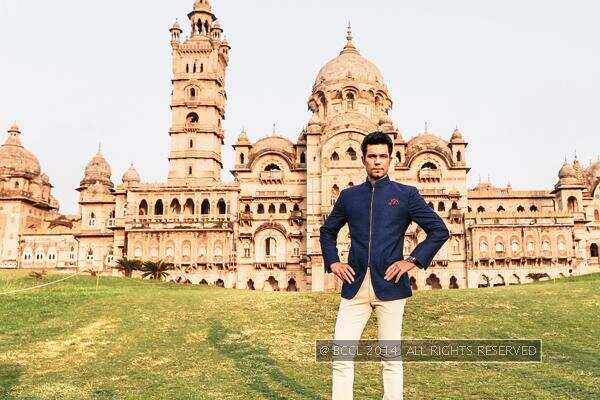
(Randeep Hooda at the Baroda Palace)
ALSO READ: Randeep Hooda: 'Rang Rasiya' will be a landmark film in my career
Raja Ravi Varma is a National Icon. The illustrious ancestor Maharaja Sayajirao Gaekwad III of the Baroda Royal family was the most important patron of the famed painter and it was he who funded the entire journeys of Ravi Varma as he travelled the length and breadth of the country to understand the soul of India.
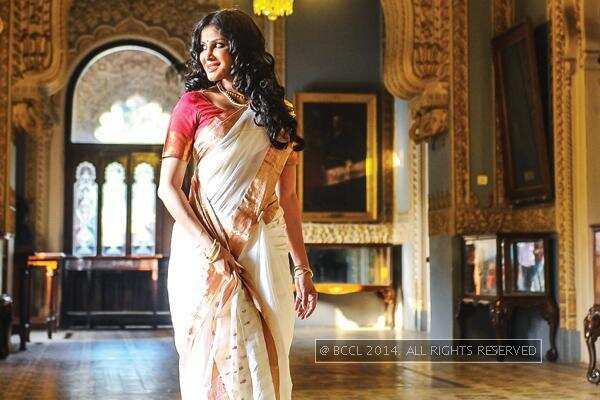
(Nandana Sen)
Sayajirao Gaekwad III had, in fact, built a special studio for the artist in the palace grounds and allowed his first ever public exhibition for the common man as per Ravi Varma’s desire. It was during his stay at the Laxmi Vilas Palace in Baroda that Ravi Varma painted some of his most well known work including that of depicting episodes from the Ramayana and the Mahabharata. It was a proud moment for Rajmata Shubhanginiraje Gaekwad as she played host to the grand premiere of the film along with the cast at Baroda. Alongside her were her son Maharaja Samarjitsinh Gaekwad and his wife Radhikaraje Gaekwad.
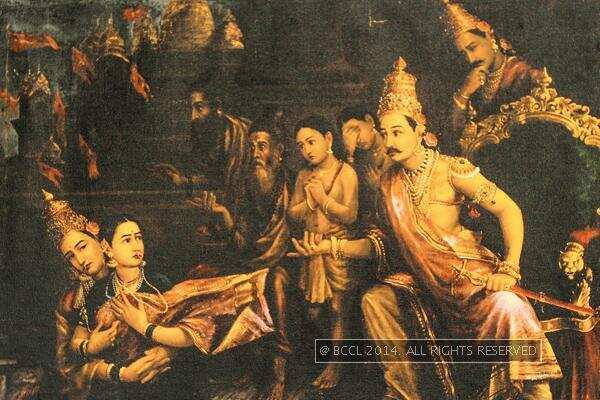
(How his paintings have been preserved: They need to breathe normally, so are kept in the normal climate and are not exposed to normal lighting. The palace has a museum where people can go and see these paintings)
Members of the royal family spoke exclusively to us post the screening:
Rajmata Shubhangini Raje: I felt emotional as I remember six years back when Ketan had come to meet my husband about the film. Today, while seeing the film, I thought of my husband a lot. He was an artist and I wondered what his take would have been and I am sure he would have had his own sensitive outlook on it. It’s a very nice film.
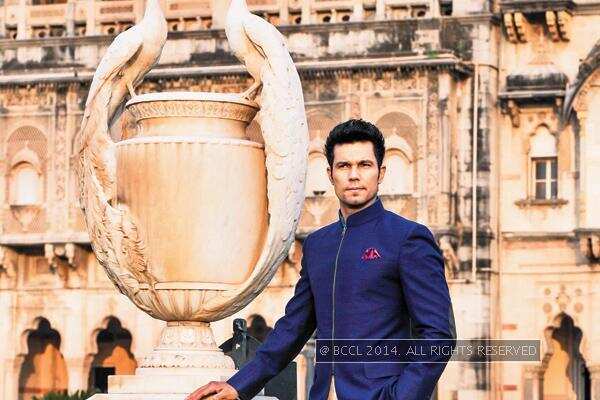
(Randeep next to a special statue at the Palace, where two peacocks have been made from a single piece of marble)
Maharaja Samarjitsinh Gaekwad: It has been made beautifully, keeping all the sensibilities in mind. Ravi Varma came and went long before I was born, but I had the fortune of my dad being a professional artist himself, so he understood art and was an admirer of Ravi Varma’s work. We have close to 50 original works of Ravi Varma at the palace (his largest collection). People often talk about buying and selling art due to the values they hold today, but dad always said, ‘You don’t look at art in that way. You like it, keep it.’ These paintings were made for the walls here and they look brilliant. They belong to this place. Ravi Varma is such a special part of the history of Baroda, this movie will bring him alive.
Radhika Raje Gaekwad: (She has done her Masters in Medieval History from Lady Shri Ram College and comes from the royal family of Wankaner in Gujarat). My family has always been big on travel, art and architecture, and Ravi Varma is a figure that I have always known. We used to have two replicas of Ravi Varma and several oleographs (prints) of his in my parental home. He was so much a part of the religious pantheon for me as my association with the Gods were how I visualised them in the oleographs and that is the case for the most of us. I got married 12 years back and found some of his most special work on the walls in our rooms. Watching the film was wonderful, to see the shared sense of pride that everyone felt just like we do. I specially connected with Sugandha’s character, the faith she had in the artist and that he could transform her into something ethereal and eternal. I cried when she felt betrayed. There were a lot of shades that as a woman, and some as a connoisseur of art, that one could connect to. The film shows his humane side as well as his flawed aspects and how he was a visionary who was ahead of his time.
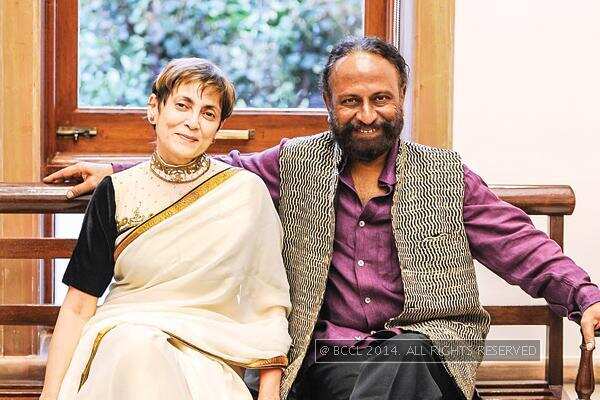
(Ketan Mehta with his memsaab)
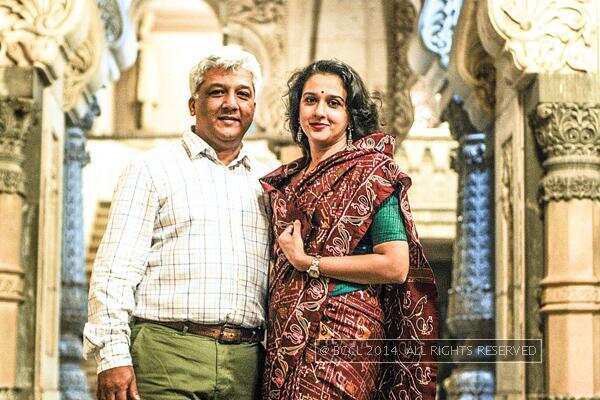
(Maharaja Samarjitsinh Gaekwad and his wife Radhikaraje Gaekwad)
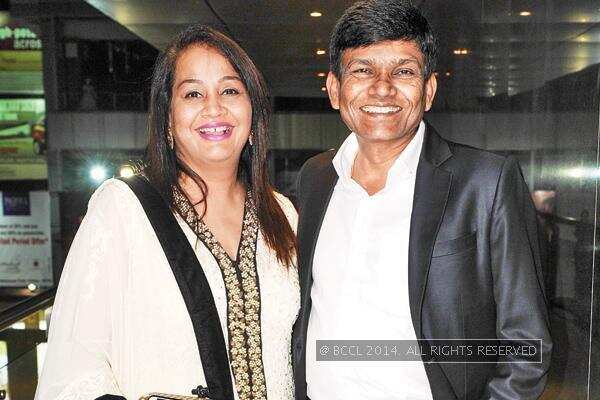
(Jayantilal Gada with his wife)
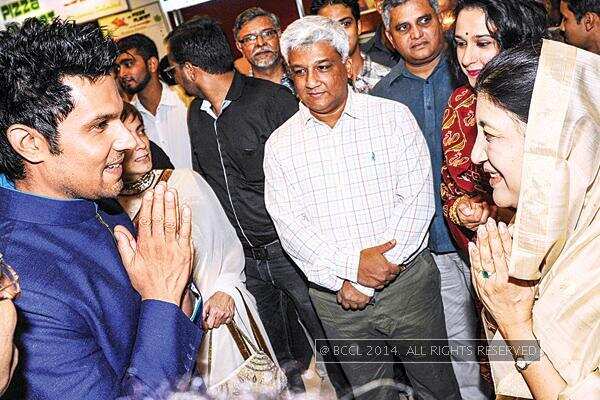
(Randeep greets Rajmata Shubhanginiraje Gaekwad)
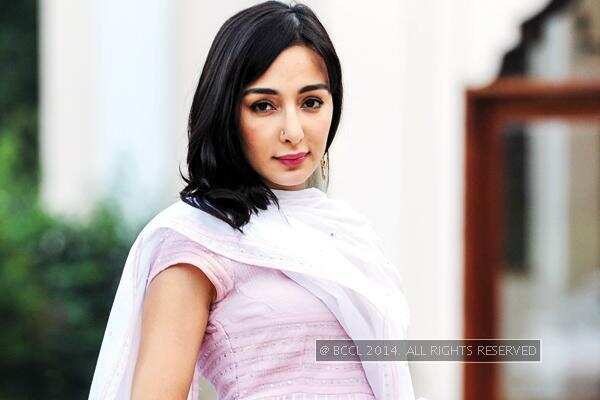
(Feryna Wazheir)
Rang Rasiya, produced by Deepa Sahi and Aanand Mehendroo, presented by Jayantilal Gada (PEN) and co-produced by Dhaval Jayantilal Gada, Kushal Kantilal Gada and Reshmaa Kadakia, releases on Nov 7.
WATCH: Randeep
Hooda: Naseeruddin Shah is the symbol of alternate cinema - TOI
End of Article
FOLLOW US ON SOCIAL MEDIA

